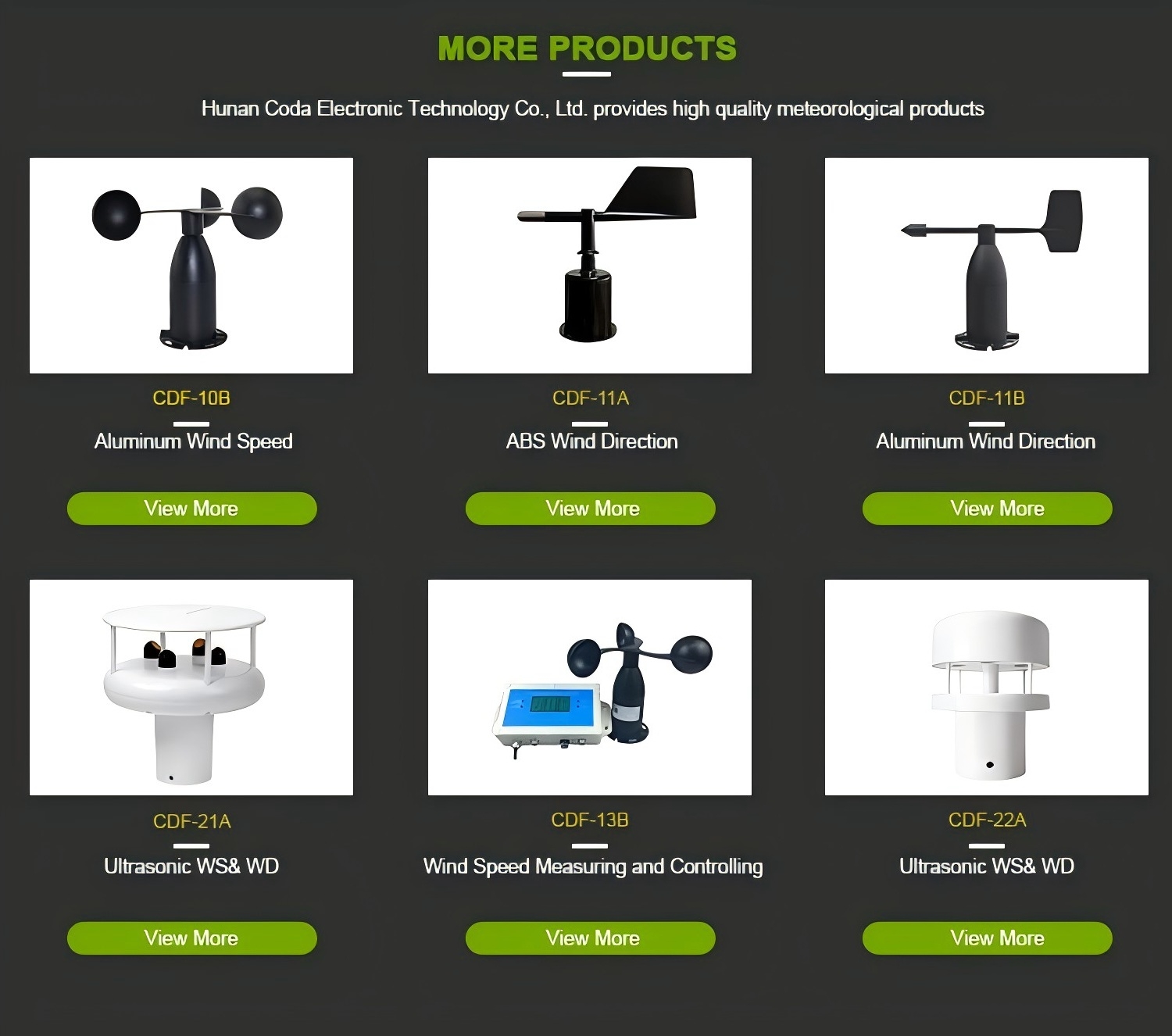Introduction
Ultrasonic wind speed sensors are advanced instruments used for measuring wind velocity and direction with high precision. Unlike traditional anemometers that have moving parts, ultrasonic wind sensors use sound waves.
They measure wind speed and direction. This makes them exceptionally durable and requires no maintenance. Various industries, including meteorology, renewable energy, agriculture, and industrial safety, widely use these sensors.
Ultrasonic wind sensors operate based on the principle of time-of-flight measurement. The sensor emits ultrasonic pulses between transducers positioned at known distances.
The device measures how long sound waves take to travel with and against the wind. This assists in determining the wind's velocity and direction. This method provides accurate and real-time wind data, even in extreme weather conditions.
High Accuracy: Provides precise wind measurements with minimal error.
No Moving Parts: Unlike mechanical anemometers, ultrasonic sensors do not have rotating components, reducing wear and tear.
Maintenance-Free: The absence of moving parts eliminates the need for frequent maintenance and calibration.
All-Weather Performance: Functions efficiently in harsh environments, including heavy rain, snow, and extreme temperatures.
Fast Response Time: Captures rapid changes in wind conditions, making it ideal for real-time monitoring.
Meteorology and Weather Stations
Used in national weather monitoring systems to provide real-time wind data.
Essential for tracking storms, hurricanes, and extreme weather conditions.
Renewable Energy
Installed in wind farms to assess wind conditions for optimizing turbine efficiency.
Helps in determining ideal locations for wind energy projects.
Aviation and Airports
Used in runway weather monitoring systems to ensure safe aircraft operations.
Assists in determining crosswind and wind shear conditions for pilots.
Marine and Offshore Applications
Used on ships and offshore platforms to monitor wind conditions for navigation and safety.
Essential for offshore wind energy projects.
Agriculture and Greenhouse Monitoring
Helps in optimizing greenhouse ventilation systems based on wind conditions.
Used in smart farming systems to improve irrigation and crop protection.
Industrial Safety and Smart Cities
Monitors wind conditions in construction sites to ensure crane and scaffolding safety.
Integrated into environmental monitoring systems to detect hazardous wind conditions in urban areas.

When selecting an ultrasonic wind speed sensor, consider the following factors:
Accuracy and Sensitivity: High-precision models provide more reliable data.
Durability and Environmental Resistance: Ensure the sensor can withstand harsh conditions.
Connectivity and Integration: Compatibility with weather stations and IoT systems for real-time monitoring.
Power Consumption: Low-power models are preferable for remote installations.
Ultrasonic wind speed sensors are revolutionizing wind measurement by offering high accuracy, durability, and maintenance-free operation. Their applications span across multiple industries, making them essential for weather monitoring, renewable energy, aviation, agriculture, and industrial safety. As technology improves, these sensors are important for making wind-related operations better and safer.
For high-quality ultrasonic wind speed sensors, Coda Sensor offers innovative and reliable solutions tailored to various industry needs. Coda Sensor uses advanced technology to offer real-time wind monitoring. This helps improve performance and safety.
Learn how CODA Sensor solar radiation and PAR se
Discover how real-time weather station data impr
Discover how Automatic Weather Stations (AWS) ar
Contact: Molly
Phone: +86-17775769236
Tel: 86-0731-85117089
Email: molly@codasensor.com
Add: Building S5, Aux Square, Yuelu District, Changsha City, Hunan Province, China
We chat